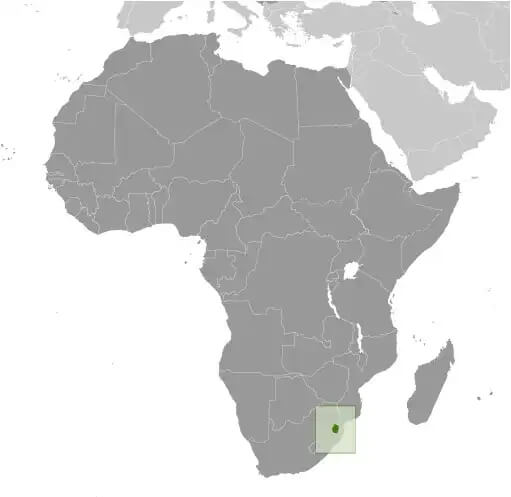World Book
Eswatini
World Book Index
53


With a score of 53, the country is ranked 117th out of 158 countries in the World Book ranking. (more information)
Introduction
Background
A Swazi kingdom was founded in the mid-18th century and administered as a UK territory of Swaziland from 1903 until its independence in 1968. The country’s absolute monarchy adopted limited political reforms in a 2005 constitution. Swaziland changed its name to the Kingdom of Eswatini in 2018.
Geography
Area
total : 17,364 sq km
land: 17,204 sq km
water: 160 sq km
Climate
varies from tropical to near temperate
Natural resources
asbestos, coal, clay, cassiterite, hydropower, forests, small gold and diamond deposits, quarry stone, and talc
People and Society
Population
total: 1,138,089 (2024 est.)
Ethnic groups
predominantly Swazi; smaller populations of other African ethnic groups, including the Zulu, as well as people of European ancestry
Languages
English (official, used for government business), siSwati (official)
Religions
Christian 90% (Zionist - a blend of Christianity and traditional African religions - 40%, Roman Catholic 20%, other Christian 30% - includes Anglican, Methodist, Church of Jesus Christ, Jehovah's Witness), Muslim 2%, other 8% (includes Baha'i, Buddhist, Hindu, indigenous, Jewish) (2015 est.)
Population growth rate
0.7% (2024 est.)
Government
Government type
absolute monarchy
Capital
name: Mbabane (administrative capital); Lobamba (royal and legislative capital)
Executive branch
chief of state: King MSWATI III (since 25 April 1986)
head of government: Prime Minister Russell DLAMINI (since 6 November 2023)
Diplomatic representation in the US
chief of mission: Ambassador Kennedy Fitzgerald GROENING (7 June 2022)
Diplomatic representation from the US
chief of mission: Ambassador (vacant) Chargé d’Affaires Marc WEINSTOCK (since August 2025)
Economy
Economic overview
landlocked southern African economy; South African trade dependent and currency pegging; CMA and SACU member state; COVID-19 economic slowdown; growing utilities inflation; persistent poverty and unemployment; HIV/AIDS labor force disruptions
Real GDP (purchasing power parity)
$12.885 billion (2024 est.)
$12.553 billion (2023 est.)
$12.135 billion (2022 est.)
Real GDP per capita
$10,400 (2024 est.)
$10,200 (2023 est.)
$10,000 (2022 est.)
Exports
$2.174 billion (2023 est.)
$2.095 billion (2022 est.)
$2.132 billion (2021 est.)
Exports - partners
South Africa 61%, Ireland 4%, Mozambique 4%, Kenya 4%, Nigeria 3% (2023)
Exports - commodities
scented mixtures, raw sugar, industrial acids/oils/alcohols, garments, wood (2023)
Imports
$2.351 billion (2023 est.)
$2.288 billion (2022 est.)
$2.173 billion (2021 est.)
Imports - partners
South Africa 71%, China 8%, India 4%, USA 2%, Mozambique 1% (2023)
Imports - commodities
refined petroleum, electricity, plastic products, cotton fabric, garments (2023)
Human Development Index
The country's Human Development Index (HDI) is 0.695, ranking it 126th out of 193 countries tested. (more information)
World Happiness Report
The World Happiness Report ranked the country 143th out of 158 countries tested with a score of 3.774. (more information)



